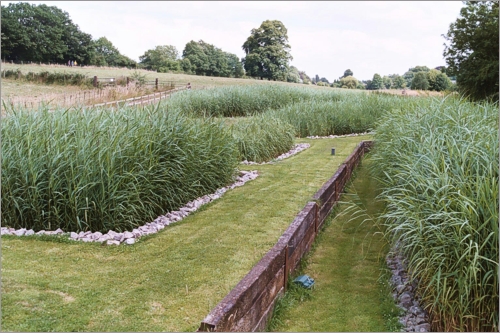A reed-bed, also known as a constructed wetland, is an engineered structure, rather like a pond, that harnesses natural ecological processes for the breakdown of the organic matter in wastewater. They contain gravels and sands which are usually planted with either the common river reed (Phragmites australis) or Reed Mace (Typha latifolia) otherwise known as Cattail in the USA. Contaminated effluent is applied either at one end or generally over the whole surface, depending on the type of reed-bed, and collected from the other end or by a series of drainage pipes at the bottom.
As the effluent passes through the gravels and sands it comes into contact with the thin film of bacteria which grows on the surfaces of the media particles. They are the primary agents that break down the organic matter in the effluent. These bacteria also grow around the root systems of the reeds where the oxygen rich atmosphere they produce assists this process.



